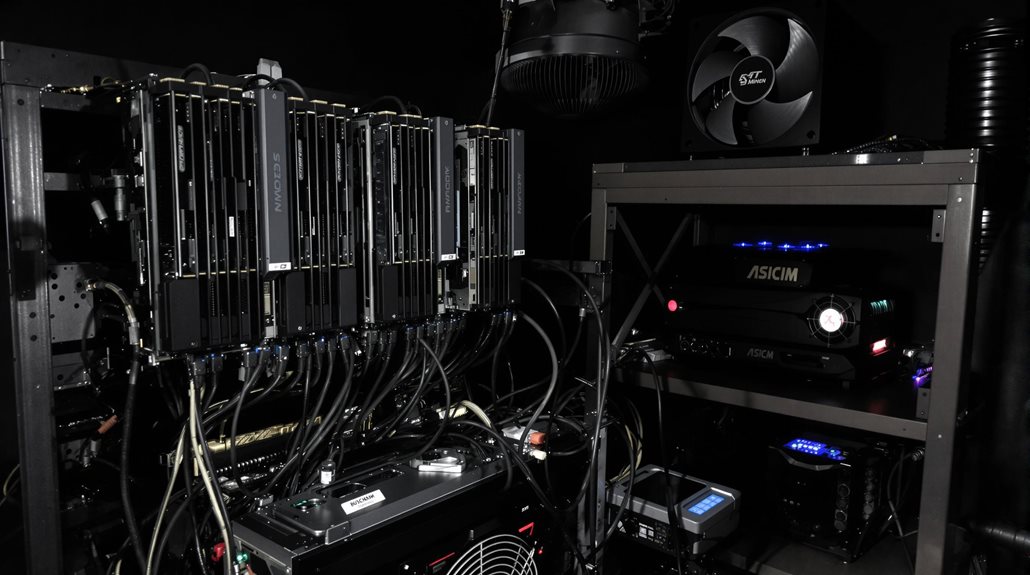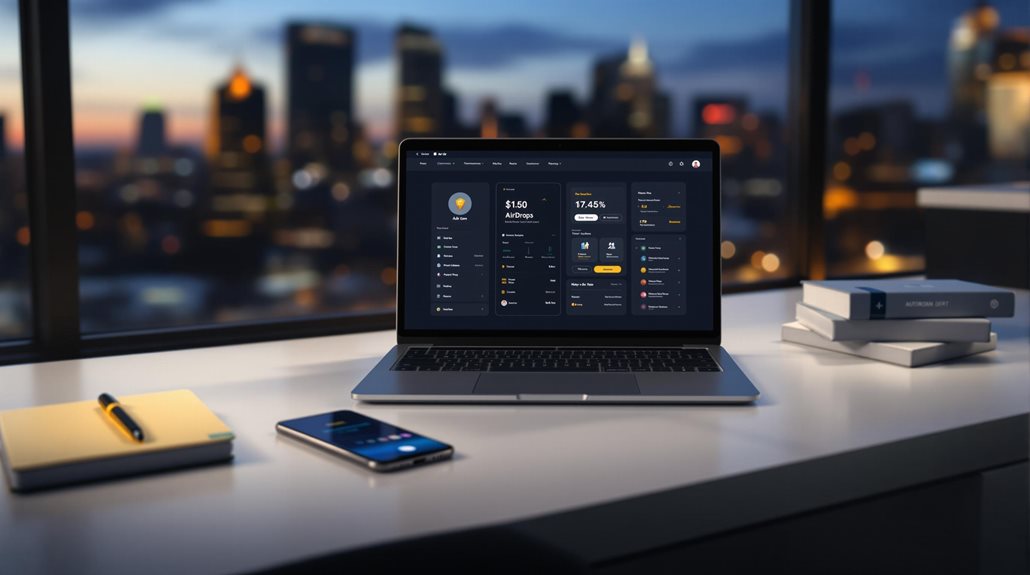Bitcoin mining requires specialized ASIC hardware and mining software to earn cryptocurrency rewards. Miners can work alone or join mining pools where they share rewards with other participants. The process needs significant electrical power, reliable internet, and proper cooling systems to prevent equipment from overheating. Success depends on factors like Bitcoin's current price, electricity costs, and network difficulty. Understanding these basics helps newcomers explore the complex world of cryptocurrency mining.

While Bitcoin mining has become increasingly complex over the years, anyone can still participate with the right equipment and knowledge. The process requires specific hardware and software components, and miners need to understand the basic requirements before getting started.
The main piece of hardware needed is an ASIC miner, which is a specialized computer designed specifically for mining Bitcoin. A successful mining setup generates hash rate values at incredible speeds, starting from KH/s up to PH/s. Miners also need a reliable power supply that can handle at least 1500W for GPUs and 1000W for the motherboard. A cooling system, whether it's fans or liquid cooling, is vital to prevent the equipment from overheating. Early miners used CPU mining for Bitcoin operations before more efficient methods emerged. A stable internet connection and a computer for monitoring the mining operation complete the hardware setup. This setup helps protect against double-spending attacks by verifying transactions through computational work.
On the software side, miners need to install Bitcoin mining software such as CGMiner, BFGMiner, or EasyMiner. They'll also need a Bitcoin wallet to store any rewards they earn. Those who plan to join a mining pool will need the appropriate pool software. The system can run on either Windows or Linux operating systems, and miners often use calculator tools to estimate their potential profits. Miners must continuously validate transactions from the mempool before adding them to new blocks.
When starting the mining process, people can choose between solo mining or joining a mining pool. Solo miners work independently but face tougher odds of earning rewards, while pool miners work together and share the rewards. After selecting their preferred method, miners purchase their hardware, install the necessary software, create a Bitcoin wallet, and configure their setup according to their chosen mining approach.
Several factors affect mining success. The current Bitcoin price and electricity costs play a major role in determining profitability. Proper ventilation and cooling are critical for keeping the equipment running efficiently. The mining software needs regular updates to maintain peak performance. Some people opt for cloud mining instead of investing in physical hardware, though this comes with its own set of considerations.
The Bitcoin network undergoes regular changes that affect mining. Halving events, which occur approximately every four years, reduce the mining reward by half. The network's difficulty level also adjusts regularly based on the total mining power being used. These factors can greatly impact a miner's potential earnings.
The mining landscape continues to evolve, and staying informed about these changes helps miners adapt their strategies accordingly.
Frequently Asked Questions
How Long Does It Take to Mine One Bitcoin?
The time to mine one Bitcoin isn't fixed – it depends on several factors.
With today's network power, it takes about 3.13 minutes to create one Bitcoin across all miners worldwide.
However, for individual miners, it's much longer. Even with powerful mining equipment, it could take several years to mine a single Bitcoin alone.
Most miners join mining pools to get smaller, more frequent portions of Bitcoin instead.
What Happens to Bitcoin Mining After All Coins Are Mined?
After all 21 million bitcoins are mined around 2140, miners won't get new coins as rewards.
Instead, they'll only earn money from transaction fees that people pay to send bitcoin. The network will still need miners to verify transactions and keep the system secure.
While there won't be new bitcoins created, the existing ones will continue to be traded.
Transaction fees might increase to keep miners motivated to maintain the network.
Can Bitcoin Mining Damage My Computer Hardware?
Bitcoin mining can definitely cause hardware damage.
It's like running a car engine at full speed 24/7. The constant workload creates lots of heat and stress on computer parts, especially graphics cards and processors.
The non-stop operation wears out components faster than normal use. Hardware problems often come from overheating, power strain, and worn-out cooling fans.
Mining rigs also collect dust quickly, which can make heating issues worse.
Is Bitcoin Mining Legal in All Countries?
Bitcoin mining isn't legal everywhere. While most countries allow it, some have banned or restricted mining activities.
For example, China completely banned it in 2021, and countries like Algeria have made all cryptocurrency activities illegal.
Other nations, like Iran, have complex rules where mining is only allowed with special permits.
In places like the United States, Canada, and Japan, it's completely legal but may be subject to local regulations and taxes.
Why Does Bitcoin Mining Use so Much Electricity?
Bitcoin mining uses lots of electricity because it's like a massive digital competition.
Miners need powerful computers running 24/7 to solve complex math puzzles that verify transactions. These specialized machines, called ASICs, work hard and get hot, requiring constant cooling.
As more miners join the network, the puzzles get harder, demanding even more computing power. It's similar to thousands of super-computers racing against each other non-stop.





